Electrostatic field finishing was initially used for metal: household appliance housings (washing machines, refrigerators), car bodies, metal doors. Gradually, because of its advantages, the method was adapted to wood finishing. Electrostatic field finishing is now commonly used for coating chairs or other objects where ordinary spraying causes very high losses.
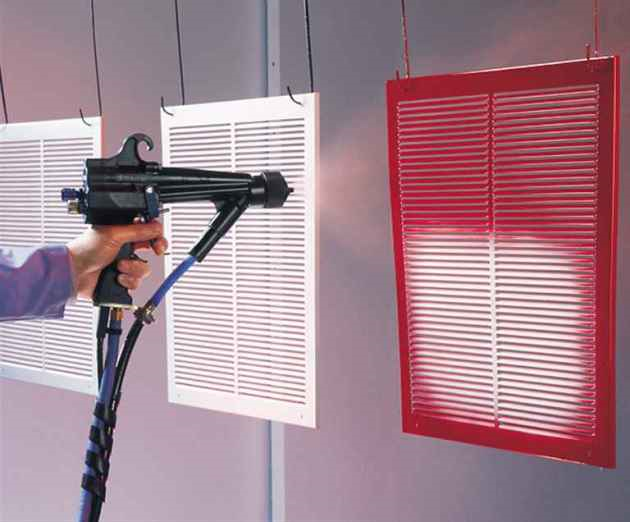
Principle of the method
Electrostatic field spraying is based on the movement of atomized particles along the lines of an electromagnetic field formed between a negatively charged gun and a positively charged object. The electrically charged varnish or paint particles are attracted to the object to be varnished along the lines of force of this field formed between the gun and the object to be finished, which is grounded. The particles yield the electric charge and are retained on the surface of the object to be finished.
The strength of the electromagnetic field depends on the distance between the gun and the object and the potential difference (voltage). Normally the voltage between the charged object and the gun is 80 kV. The distance depends on the equipment and varies between 0.3 and 0.5 m.
Wood is a poor conductor of electricity. Therefore, to have an optimal electrostatic effect, the humidity of wood should be 10-12% and the humidity of air should not be below 60-70%. To improve its conductivity, the wood can be treated with saline solutions or kept briefly in special steam rooms.
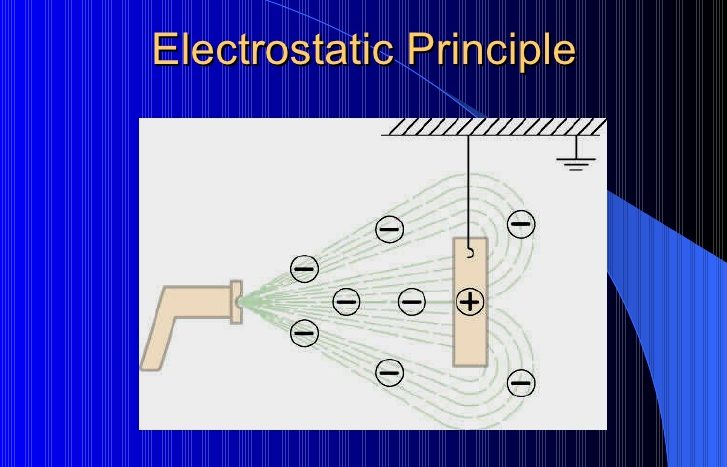
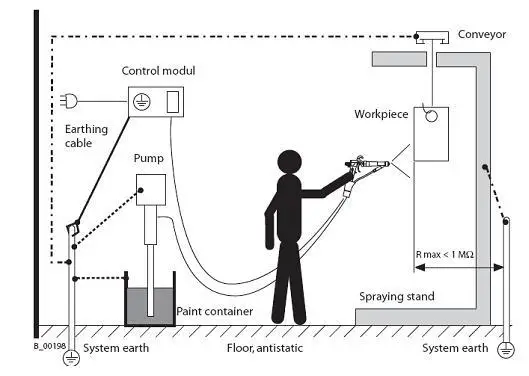
Electrostatic field spray guns
It goes without saying that not just any spray gun can be used for such applications, and not just any varnish. There is special equipment for electrostatic field application, which transmits electric charge to peliculogenic materials specifically formulated to conduct electric current.
The equipment can be similar to ordinary spray guns or they can be application disks. The latter rotate and spread the negatively charged paint, which is attracted to the positively charged objects to be coated. The disk system is older and less commonly used these days.
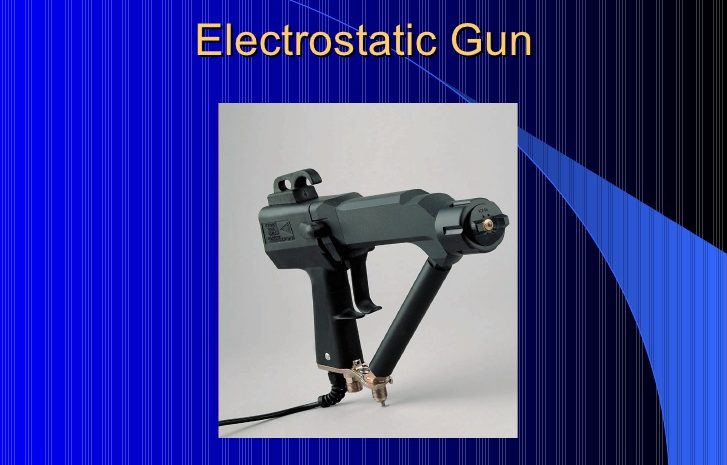
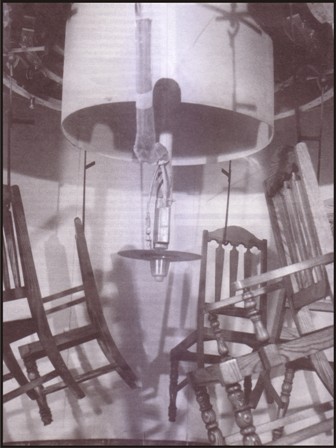
photo source: wisnofurniturefinishing.com
Electrostatic field finishing
Electrostatic field finishing materials are different from the usual ones. They differ in the solvents used to dissolve the resin, surface tension, viscosity and electrostatic charge capacity. Products that can be used are those that form a film (primer, varnish, enamel). In the composition of the materials are substances that increase conductivity and by forming the film, the conductivity of the object also increases. This will be higher the more layers there are. Glazes, glazes or similar products cannot be applied in this way.
Both solvent-based and waterborne products may be electrostatically applied, provided they are formulated for this type of application. Application of solvent-based products is not hazardous because high flash point solvents are used.
Viscosity is also very important in this type of application. If the recommended viscosity is not respected, the application will not perform as expected.
The person doing the electrostatic field application must be trained for such work. They must also know how to maintain the gun. Both the lifetime of the equipment and the avoidance of accidents depend on this.
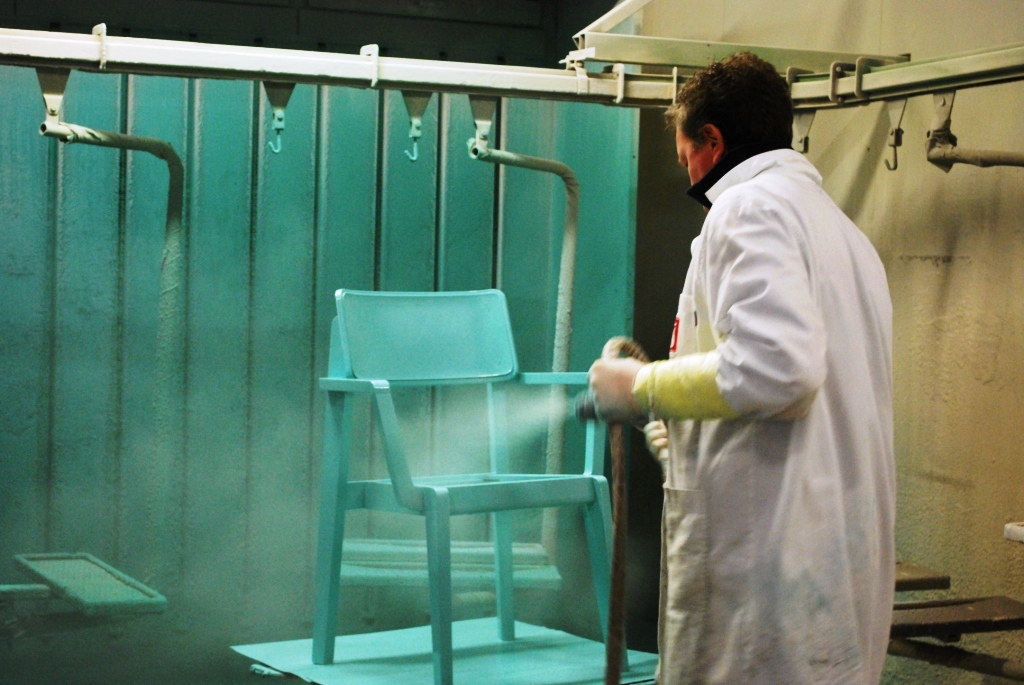
Advantages of electrostatic field application
The main advantage of the process is the considerable reduction in material consumption by minimizing waste.
In conventional spraying the lowest losses are when finishing straight panels without mechanical processing. Losses increase as machining occurs and the varnish surface narrows. This is the case for frames, carved elements or seats. Theoretical losses in the case of panels are in this case 20%, reaching 60% in the case of seats. In reality, however, the losses of finishing material are much higher, reaching and even exceeding 1001TP33T.
With electrostatic finishing, the reduction in losses is spectacular. Material consumption is reduced by 50%, even 80%. Because of the electric charges, even if the spraying is done from the front of the object to be finished (seat, frame), the particles settle on the back of the object and are attracted by the electromagnetic field formed. This reduces the amount of material that ends up in the atmosphere (overspray) or on the ground and increases the amount deposited on the wood.
Another advantage deriving from the above is the improvement of working conditions. By reducing wastage, the atmosphere in the working hall will be much cleaner, and the problems related to environmental protection and quality of work will be significantly reduced.
Other advantages are the uniform application of the finishing coat and the possibility to automate the entire system, thus increasing productivity.
The most high-performance equipment combines electrostatic spraying with anthropomorphic robots. These robots apply the material by following the contour of the part, which is done with special software. In combination with the electrostatic effect, material losses are further reduced.
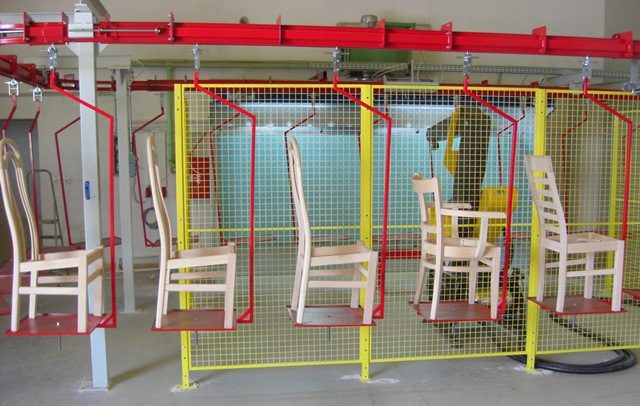
For advice or specialized assistance in industrial finishing projects you can contact the specialists at Falk Consulting.




































At first I thought it was misspelled ... electrostatic for wood, a great idea, but I think it's only applicable to large series, for objects with many hidden surfaces.
Congratulations Mrs Radu!
Thank you! The idea for the article came to me when someone, reading in an article a reference to electrostatic field application, had the same reaction as you. Even now I'm not sure I managed to convince him, he was very convinced that such a thing is impossible to exist. Although it may seem new, electrostatic field application has been used for a long time to finish chairs. In the beginning there were small problems, the sprays were slightly runny, but now they are very safe. They are used a lot in combination with (anthropomorphic) robots on finishing lines. There is no need for large series if you use a spray gun and not a finishing line. I have found such spray guns in places I would not have expected.
Are you coming to the BIFE? I would love to meet you, to have a chat. All the best 🙂 🙂
I don't know if I make it to BIFE, we've given up participating, it's not the market we currently address. We were present in 2012 and 2013, with real success, in terms of appreciation, but poor contacts for series production.
I am waiting for your email if you want to contact me.
I think we are complementary in an underrepresented niche with few options for online visitors. I appreciate your team of co-writers, you have wonderful potential there.
Hello, can you please tell me a company that deals with professional wood painting as it appears in the article? thank you
Hello.
If you want to paint wood, it is best to ask on Facebook, on groups that deal with wood (woodworking romania, carpenters, solid wood carpenters group, etc). There are companies that paint for third parties.
All the best!